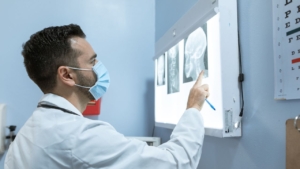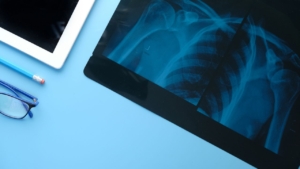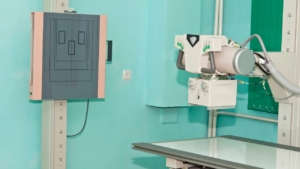Key Takeaways:
- Impact of Shortage: The iodinated contrast media crisis necessitates rethinking resource management and exploring alternative imaging strategies.
- Optimization Strategies: Adjusting protocols, weight-based dosing, and centralized purchasing are key to optimizing contrast media usage.
- Alternative Approaches: Shifting to MRI, ultrasound, and alternative contrast agents can reduce reliance on iodinated contrast.
- Technological Advancements: AI-driven imaging, dual-energy CT, and low-contrast protocols can enhance diagnostic accuracy while minimizing contrast usage.
- Collaborative Solutions: Resource sharing, staff training, and industry collaboration are crucial for navigating the crisis and ensuring continued access to quality care.
The ongoing iodinated contrast media crisis has presented significant challenges for radiology departments worldwide.
This shortage impacts essential imaging procedures such as CT scans, leaving healthcare providers searching for effective ways to maintain diagnostic accuracy.
In this guide, we explore 15 proven solutions to overcoming contrast supply challenges, ensuring that patients continue to receive high-quality care during this difficult time.
The Iodinated Contrast Media Crisis
The iodinated contrast media crisis arises from supply chain disruptions and increased global demand for medical imaging.
This critical issue has forced radiology departments to rethink strategies for resource conservation in radiology and explore contrast media alternatives. By implementing proactive measures, healthcare facilities can mitigate the impact of this shortage.
15 Proven Strategies to Address the Contrast Media Shortage
Optimize Contrast Media Usage
- Adjust Imaging Protocols: Tailor protocols to use the minimum effective dose of iodinated contrast while maintaining diagnostic accuracy.
- Weight-Based Dosing: Implement weight-based contrast dosing to ensure efficient use for every patient.
- Batch Scheduling: Group patients requiring similar contrast procedures to reduce waste during contrast preparation.
Leverage Contrast Media Alternatives
- Shift to MRI and Ultrasound: Use MRI contrast agents and contrast-enhanced ultrasound as alternatives to iodinated contrast-reliant imaging.
- Adopt Gadolinium-Based Agents: These agents serve as effective substitutes in Magnetic Resonance Imaging, reducing dependency on iodinated contrast.
- Use CO2 for Vascular Imaging: In select vascular imaging procedures, carbon dioxide provides a safe and efficient alternative contrast medium.
Enhance Radiology Resource Management
- Centralized Purchasing Systems: Consolidate orders across departments to maximize supply chain efficiency and secure larger quantities.
- Optimize Inventory Monitoring: Employ robust inventory management systems to track usage patterns and expiration dates, reducing wastage.
- Develop Supplier Relationships: Partner with reliable suppliers for real-time updates on product availability and priority shipments.
Invest in Technological Innovations
- AI-Driven Imaging: Integrate AI tools to enhance the quality of low-contrast images, reducing the amount of contrast needed for diagnostics.
- Dual-Energy CT Scanners: These scanners deliver diagnostic-quality images with lower or no iodinated contrast.
- Low-Contrast Imaging Protocols: Update imaging systems to operate efficiently with reduced contrast dosages.
Educate and Collaborate
- Staff Training: Educate radiologists and technologists on modified imaging protocols and the use of contrast media alternatives to ensure efficient application.
- Resource Sharing: Collaborate with neighboring healthcare facilities to pool resources and mitigate critical shortages.
- Engage in Industry Advocacy: Join networks and forums to share best practices and influence systemic solutions for contrast media supply challenges.
Expand Access to Contrast Media Reserves
Healthcare providers can mitigate the effects of the iodinated contrast media crisis by establishing and managing reserve supplies of contrast media.
- Create Emergency Stockpiles: Maintain a reserve of iodinated contrast for critical cases to prevent disruptions in urgent imaging procedures.
- Implement Prioritization Protocols: Reserve contrast media for patients requiring essential diagnostic imaging, such as trauma or oncology cases.
- Coordinate with Suppliers: Work with manufacturers and distributors to ensure steady access to replenishment for emergency stockpiles.
Managing reserve supplies ensures that critical cases are prioritized during shortages, maintaining uninterrupted patient care.
Develop Sustainable Practices in Radiology
Sustainability is an important factor in overcoming contrast supply challenges. Facilities can adopt eco-friendly and efficient practices to reduce wastage and optimize resource use.
- Recycling Unused Contrast Media: Where regulations allow, develop processes for recycling unused contrast materials to extend supplies.
- Eco-Friendly Contrast Alternatives: Explore sustainable contrast formulations to reduce the environmental impact of medical imaging.
- Energy-Efficient Imaging Equipment: Upgrade imaging devices to models that consume less energy and require lower contrast dosages.
Sustainable practices not only address immediate shortages but also help create a more resilient diagnostic imaging infrastructure for the future.
Implement Telemedicine for Pre-Imaging Consultations
Integrating telemedicine into imaging workflows can reduce unnecessary contrast usage by refining the selection of diagnostic procedures.
- Pre-Imaging Triage: Use telemedicine platforms to assess patient needs and recommend alternative imaging modalities when possible.
- Remote Consultations with Radiologists: Facilitate real-time discussions between referring physicians and radiologists to identify the most efficient imaging approach.
- Patient Education: Educate patients via telehealth on imaging alternatives, ensuring better understanding and compliance with adjusted protocols.
Telemedicine offers a practical way to optimize contrast media usage while maintaining high-quality care for patients.
Standardize Radiology Protocols Across Facilities
Consistency in radiology practices is critical for reducing wastage and ensuring efficient use of limited resources during the iodinated contrast media crisis.
- Develop Standard Protocols: Create universal imaging guidelines to streamline resource use across departments and healthcare facilities.
- Conduct Multi-Facility Training: Train healthcare professionals across different facilities to follow standardized procedures.
- Monitor and Audit Resource Use: Establish tracking systems to measure adherence to standardized protocols and identify areas for improvement.
Standardized protocols support efficient operations, ensuring equitable resource distribution and sustained patient care during shortages.
Foster Research and Innovation in Contrast Media
Encouraging research into contrast media alternatives and innovations can address long-term supply challenges and reduce dependence on limited resources.
- Support Clinical Trials: Partner with academic institutions to develop and test new contrast formulations for diagnostic imaging procedures.
- Invest in Hybrid Imaging Techniques: Explore combinations of imaging modalities, such as PET-CT, that reduce reliance on iodinated contrast.
- Promote Industry Collaboration: Collaborate with pharmaceutical and imaging technology companies to create safer, more efficient contrast agents.
By investing in research and innovation, healthcare providers can future-proof their diagnostic capabilities and improve patient outcomes.
Navigate the Contrast Media Crisis with Confidence
Ensure your healthcare facility is prepared to overcome the challenges of imaging during contrast media shortages with innovative strategies and proven solutions.
Spectrum Medical Imaging Co. offers expert guidance, advanced resources, and cutting-edge technologies to support your imaging needs.
Contact Spectrum Medical Imaging Co. today at 800-859-6162 to learn how we can help optimize your resources and sustain diagnostic excellence.




